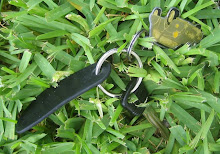
The first stop that morning was at Dunkeld Cathedral on the north bank of the River Tay.

Built in square-stone style of predominantly gray sandstone, the cathedral proper was begun in 1260 and completed in 1501.

Although partly in ruins, the cathedral is in regular use today and is open to the public.

More scenery.

We also did a short hike that day up into the hills.



Back on the road again up into the highlands.

After lunch, I had a taste of a deep fried Mars bar. I was not expecting it to be too good, but I was pleasantly surprised.

After lunch we headed to Ruthven Barracks near Ruthven, Highland in Scotland. They are the smallest but best preserved of the four barracks built in 1719 after the 1715 Jacobite rising, set on an old castle mound. It comprises two large three-storey blocks occupying two sides of the enclosure each with two rooms per floor.
In August 1745 some 200 Jacobites tried to capture Ruthven Barracks. A force of just 12 British redcoats, commanded by a Sergeant Molloy, fought them off with the loss of just one man. By February 1746 Sergeant Molloy had been promoted to Lieutenant. He was still in charge when a larger force of Jacobites arrived, this time equipped with artillery. As a result the government garrison surrendered.

The stables which stood slightly to the west of the barracks were built in 1734 to house 28 horses for dragoons.

A castle in the distance.

A war memorial.

Arrival at Loch Ness. Look very closely in the background. The local expert maintains that there is not just one creature living there. In addition, he believes there are more such creatures living in other lakes around the world.


One of the locks at Fort Augustus. Loch Ness makes up part of the Caledonian Canal, which connects the Scottish east coast at Inverness with the west coast at Corpach near Fort William. The Caledonian Canal runs some 62 miles (100 kilometres) from northeast to southwest. Only one third of the entire length is man-made, the rest being formed by Loch Dochfour, Loch Ness, Loch Oich, and Loch Lochy. These lochs are part of the Great Glen, a geological fault in the Earth's crust. There are 29 locks (including eight at Neptune's Staircase, Banavie), four aqueducts and 10 bridges in the course of the canal.


No comments:
Post a Comment